
June 30, 2023
Introduction
In today’s society, the gap between the rich and the poor continues to widen. The rich seem to amass more wealth and resources, while the poor struggle to make ends meet. This phenomenon, often referred to as “The rich get richer, the poor get poorer,” has sparked debates and discussions on socioeconomic inequality and its consequences. This post examines the different elements contributing to this inequality and explores possible solutions to this urgent problem.
The Rich Get Richer, the Poor Get Poorer: Understanding the Phenomenon
“The rich get richer, the poor get poorer” describes the widening wealth gap between the affluent and less privileged. Wealthy individuals have more opportunities to accumulate wealth, while disadvantaged individuals struggle to improve their circumstances.
Factors contributing to this disparity include concentrated resources, economic systems, limited social mobility, and unequal access to opportunities. Addressing this issue requires policy reforms, social interventions, and equitable resource distribution. Investing in education, promoting inclusive growth, protecting workers’ rights, and implementing social safety nets are crucial steps. By striving for an equitable society with equal opportunities, we can reduce wealth inequality and empower individuals to thrive.
Historical Context: Origins of Socioeconomic Inequality
The roots of socioeconomic inequality can be traced back to ancient civilizations, where societal hierarchies based on wealth, power, and privilege began to take shape. In agrarian societies, land ownership played a pivotal role in determining one’s socioeconomic status. Landowners amassed wealth through agricultural productivity, while the majority of the population worked as labourers or serfs, struggling to make ends meet.
Captivating Article Worthy of Exploration: Decoding the Dow Jones Utility Average
Feudalism and the Rise of Capitalism
Feudalism, which dominated medieval Europe, further perpetuated socioeconomic inequality. Feudal lords, known as the nobility, controlled vast amounts of land and held significant political power. Peasants, conversely, were bound to the land and obligated to provide labour and resources to their lords in exchange for protection. This system reinforced the stark divide between the rich and the poor, limiting upward mobility for those born into lower social classes.
The transition from feudalism to capitalism during the Industrial Revolution marked a significant turning point in socioeconomic inequality. The advent of machinery and mass production brought about unprecedented economic growth. However, this progress came at a cost. Industrial workers faced harsh working conditions, long hours, and meagre wages, while factory owners accumulated vast fortunes. The concentration of wealth in the hands of a few led to a widening gap between the rich and the poor, exemplifying the notion that “the rich get richer, the poor get poorer.”
Colonialism and Global Inequality
The era of colonialism further exacerbated global socioeconomic disparities. European powers exploited colonies for their natural resources and cheap labour, draining wealth from colonized regions. The extraction of resources and establishing trade imbalances perpetuated poverty and underdevelopment in colonized nations while enriching the colonizers. This unequal exchange contributed to the persistence of socioeconomic inequality on a global scale.
Modern Challenges
Although significant progress has been made in social welfare, education, and workers’ rights in the contemporary era, socioeconomic inequality remains a pressing issue. Factors such as unequal access to quality education, limited job opportunities, systemic discrimination, and unequal distribution of wealth continue to reinforce the cycle of poverty and wealth accumulation. This perpetuation of inequality aligns with the adage, “The rich get richer, the poor get poorer.”
Impact of Economic Systems on Wealth Distribution
Different economic systems have other implications for wealth distribution. Capitalist economies, for example, prioritize private ownership and market competition. While this can lead to innovation and economic growth, it can also exacerbate wealth disparities. Socialist or welfare-oriented economies, on the other hand, aim to reduce inequality through government intervention and wealth redistribution.
Globalization and Its Influence on Inequality
The Reach of Globalization
Globalization has brought significant changes to the economic landscape, facilitating the flow of goods, services, capital, and information across borders. Technological advancements, improved transportation, and liberalized trade policies have accelerated economic growth and created new opportunities. However, the impact of globalization on inequality is a complex issue with both positive and negative implications.
Wealth Concentration
One of the key outcomes of globalization is the concentration of wealth among a select few. As multinational corporations expand their operations globally, they often benefit from favourable tax policies, access to cheap labour, and the ability to exploit resources in developing countries. This has led to the accumulation of vast fortunes by a small segment of society, contributing to the widening wealth gap. Consequently, “the rich get richer, the poor get poorer” reflects the reality of increasing income disparities within and between countries.
Job Displacement and Wage Inequality
Globalization has also reshaped the job market, resulting in gains and losses for different groups. While globalization has created employment opportunities in sectors such as manufacturing and services, it has also led to job displacement in certain industries. Workers in developed countries often face competition from cheaper labour in emerging economies, which can lead to wage stagnation or decline. In contrast, multinational corporations and skilled workers may benefit from globalization through increased market access and higher wages. This dynamic further perpetuates inequality and reinforces the notion that “the rich get richer, the poor get poorer.”
Unequal Access to Resources and Opportunities
Globalization has not been equitable in providing access to resources and opportunities. Developing countries, particularly those with limited infrastructure and weaker institutions, often face challenges in fully benefiting from globalization. Structural barriers, such as inadequate education systems, lack of access to credit, and limited technological capabilities, hinder their ability to participate fully in the global economy. Consequently, these countries and marginalized communities within them are at a disadvantage, exacerbating inequality and reinforcing the phrase “the rich get richer, the poor get poorer.”
Addressing Globalization’s Impact
Recognizing and addressing the inequalities arising from globalization is essential for promoting a more equitable world. Policymakers must focus on implementing measures that ensure the benefits of globalization are shared more equitably. This includes investing in education and skills training, promoting inclusive growth, safeguarding workers’ rights, and creating social safety nets to mitigate the adverse effects of globalization. Additionally, international cooperation is crucial to address global challenges, such as tax evasion and illicit financial flows, which perpetuate wealth concentration and hinder efforts to reduce inequality.
Factors Contributing to the Rich-Poor Divide
Education Disparities: Knowledge as a Catalyst for Inequality
Access to quality education plays a pivotal role in determining one’s socioeconomic status. Unfortunately, disadvantaged communities often face inadequate educational resources and limited opportunities for upward mobility. As a result, the rich have greater access to high-quality education, opening doors to lucrative careers and higher incomes.
Economic Mobility and Social Mobility
Economic mobility refers to the ability of individuals to move up or down the economic ladder. Similarly, social mobility pertains to the ability to move between social classes. In societies where economic and social mobility is limited, the rich tend to maintain their privileged status while the poor struggle to break free from the cycle of poverty.
Wage Disparity and Income Inequality
Wage disparities contribute significantly to the growing wealth gap. Many low-wage workers struggle to cover their basic needs, while CEOs and top executives earn exorbitant salaries and bonuses. Income inequality affects individuals and hampers overall economic growth and stability.
Systemic Discrimination and Inequity
Systemic discrimination based on factors such as race, gender, and socioeconomic status further perpetuates socioeconomic inequality. Minority groups and marginalized communities often face systemic barriers that hinder their access to equal opportunities in employment, education, and housing.
Conclusion
In conclusion, the phrase “the rich get richer, the poor get poorer” succinctly captures the ongoing and concerning phenomenon of widening socioeconomic inequality. This disparity has historical roots dating back to ancient civilizations, where wealth and power became concentrated among the privileged few. Feudalism and the transition to capitalism during the Industrial Revolution further deepened these inequalities, as did the era of colonialism, which perpetuated global disparities.
In the modern era, despite progress in areas such as social welfare and education, socioeconomic inequality remains a pressing issue. Factors such as unequal access to quality education, limited job opportunities, systemic discrimination, and unequal distribution of wealth continue to reinforce the cycle of poverty and wealth accumulation. Different economic systems have varying impacts on wealth distribution, with capitalism often exacerbating disparities and socialist or welfare-oriented systems aiming to reduce them.
Globalization and Inequality: Addressing Challenges for a Fairer Future
Globalization has also played a significant role in shaping inequality. While it has brought economic growth and opportunities, it has also led to wealth concentration, job displacement, and unequal access to resources and opportunities. Developing countries and marginalized communities face significant challenges in benefiting from globalization, further widening the gap between the rich and the poor.
Addressing the impact of globalization and tackling socioeconomic inequality requires comprehensive measures. These include investing in education and skills training, promoting inclusive growth, protecting workers’ rights, and establishing social safety nets. International cooperation is essential in addressing global challenges such as tax evasion and illicit financial flows, which perpetuate wealth concentration and hinder efforts to reduce inequality.
Education disparities, limited economic and social mobility, wage disparities, and systemic discrimination are key factors that contribute to the rich-poor divide. Overcoming these challenges necessitates systemic reforms, collective action, and a commitment to building more equitable societies. By striving for a fairer distribution of wealth and opportunities, we can work towards a future where everyone has the chance to thrive, and socioeconomic inequalities are significantly reduced.
FAQs
1. How does “The rich get richer, the poor get poorer” impact society?
“The rich get richer, the poor get poorer” contributes to social unrest and dissatisfaction. It creates a sense of injustice and hampers social cohesion, potentially leading to various socioeconomic and political problems.
2. Are there any benefits to socioeconomic inequality?
While some argue that socioeconomic inequality can spur economic growth and incentivize individuals to strive for success, the overwhelming consensus is that extreme inequality hinders social progress and leads to widespread disparities in health, education, and living standards.
3. What role do government policies play in addressing this issue?
Government policies can play a crucial role in mitigating socioeconomic inequality. Implementing progressive tax systems, increasing access to quality education, providing social safety nets, and promoting inclusive economic policies are some measures that can help reduce the wealth gap.
4. Is there hope for reducing the rich-poor divide?
Despite the challenges, there is hope for reducing socioeconomic inequalityy. Grassroots movements, policy reforms, and increased awareness can pave the way for a more equitable society. However, concerted efforts from all stakeholders are necessary for sustainable change.
5. How can individuals contribute to addressing this issue?
Individuals can contribute to addressing socioeconomic inequality by supporting organizations that work towards social justice, advocating for fair policies, and actively engaging in discussions on wealth distribution and systemic inequalities. Small actions, when combined, can have a significant impact.
6. What are the potential consequences of failing to address socioeconomic inequality?
Failing to address socioeconomic inequality can have dire consequences for society. It can lead to increased poverty rates, decreased social mobility, heightened crime rates, and political instability. It is in the best interest of society as a whole to strive for a more equal and just world.
Enrich Your Knowledge: Articles Worth Checking Out

Rags to Riches Stories: The Power of Perseverance and Discipline
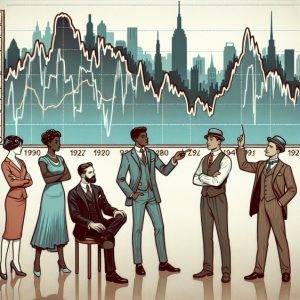
Dow Jones Average Chart: Trading for Success
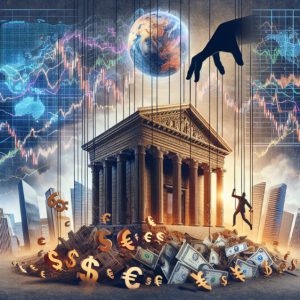
Financial Disaster Recovery Plan: Buying the Crash, Selling the Joy
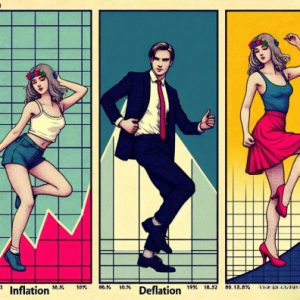
Inflation vs Deflation vs Disinflation: Navigating and Winning
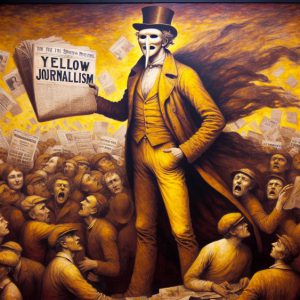
Unmasking Deceit: Examples of Yellow Journalism
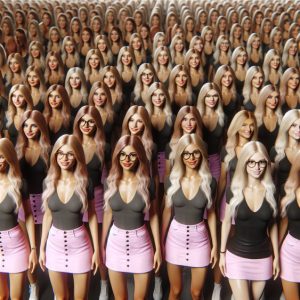
Crude Oil Crash: Unveiling Crowd Stupidity and Opportunity
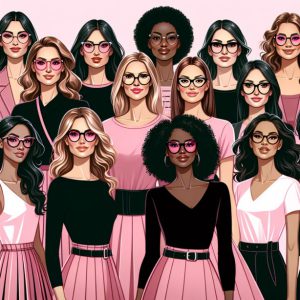
Mass Psychology Overview: Unveiling its Enigmatic Dynamics

What is Mass Psychology: Mastering the Investment Game

Strategic vs Tactical Asset Allocation: The Dominating Difference

When Inflation is, the Fed Aims to Slow the Economy

Latest Stock Market News: Making Money With Mass Psychology

People Who Went From Rags to Riches and How They Did It

Tactical Asset Allocation: Master Portfolio Strategy

Hyperinflation Can Occur When the Fed Goes Insane



